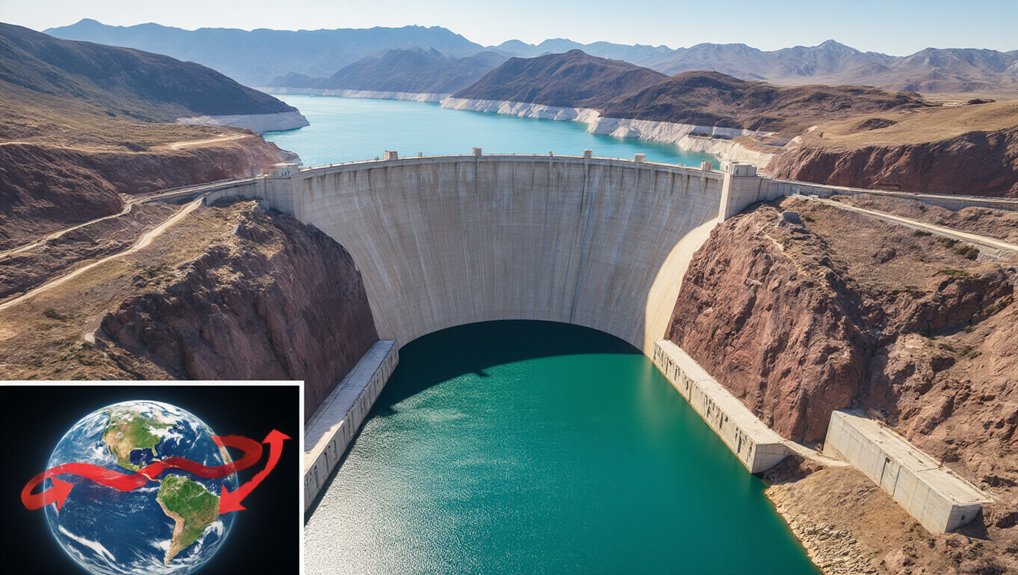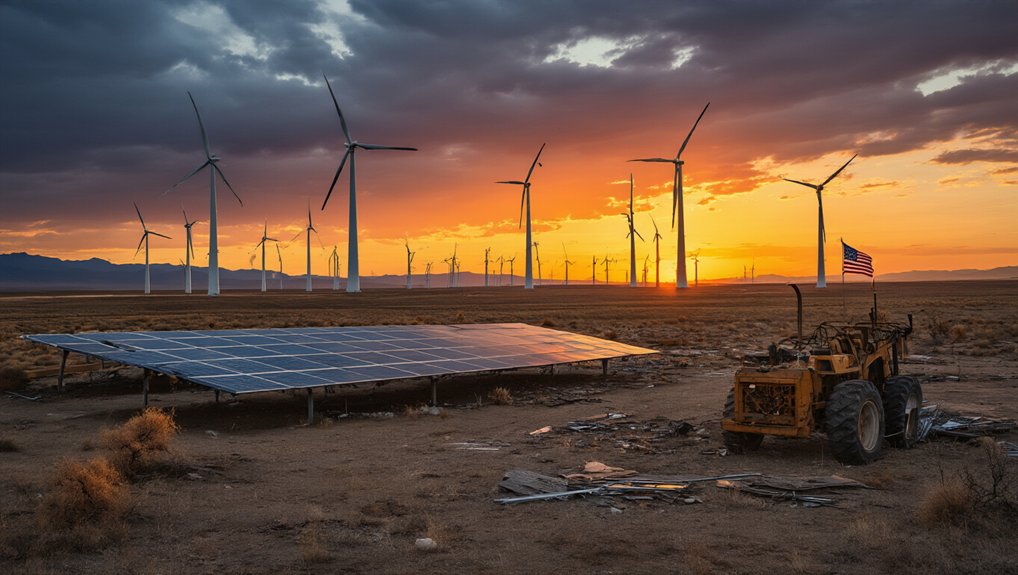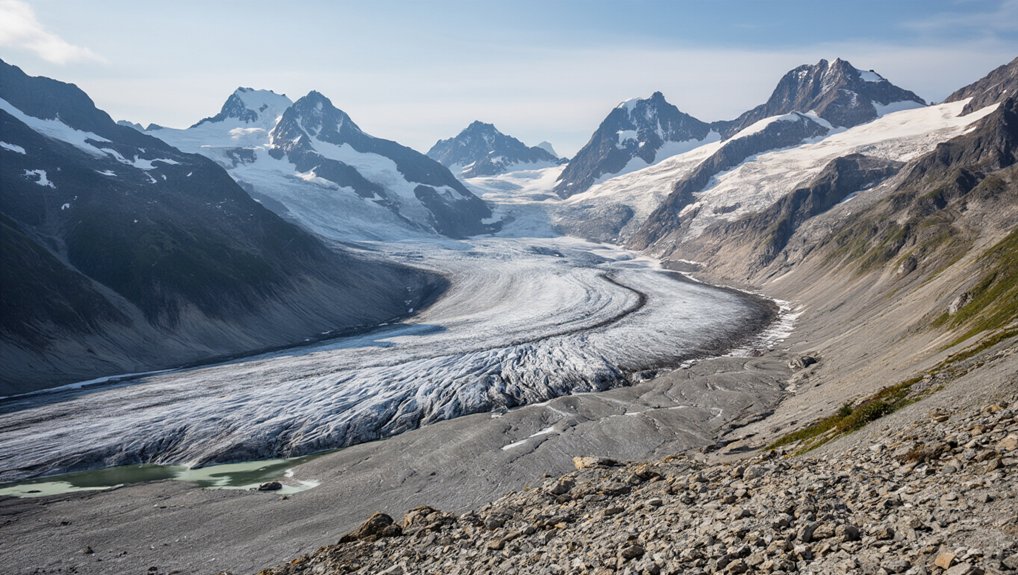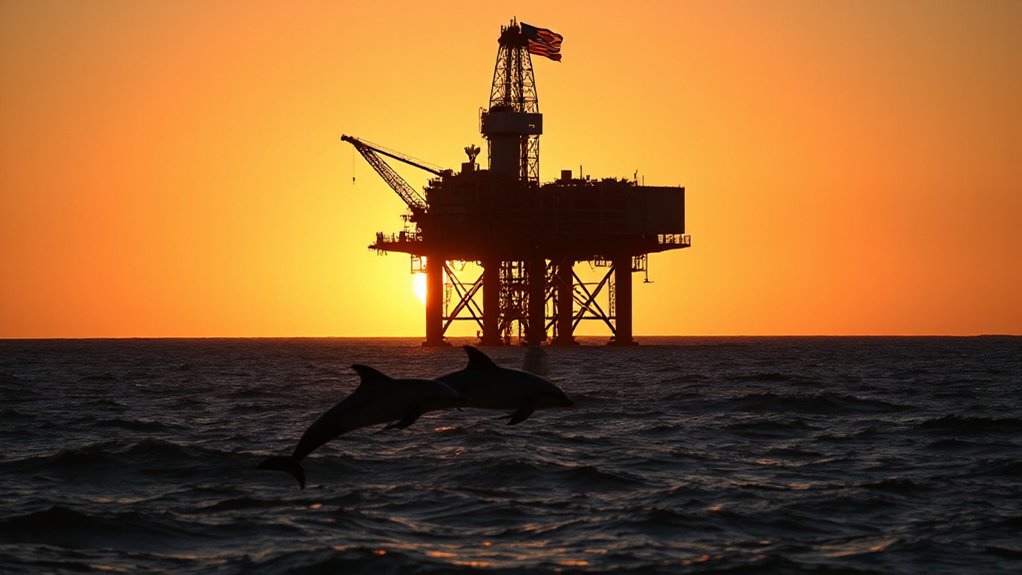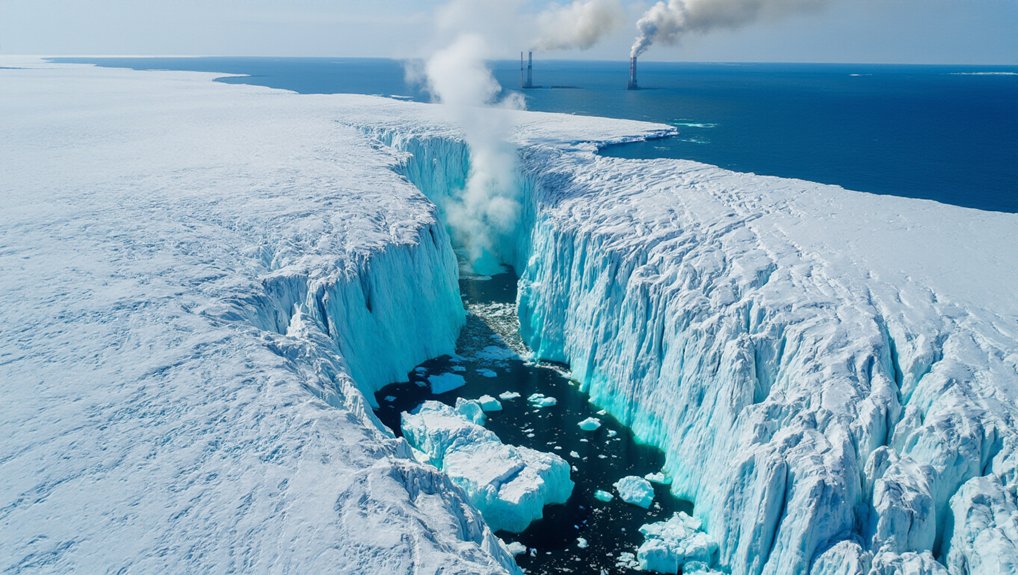While most people worry about climate change and deforestation, humanity has been quietly shoving Earth’s poles around for nearly two centuries. Yeah, you read that right. Since 1835, we’ve been pushing our planet around like furniture in a living room—all because of dams. Nearly 7,000 large dams built worldwide have literally altered Earth’s axis.
The science is mind-boggling but straightforward. These massive concrete structures have impounded enough water to fill the Grand Canyon twice over. That’s not just a lot of water. That’s a planetary-scale redistribution of mass. When you move that much weight around, Earth notices.
The effect? Our geographic poles have shifted by about one meter—three whole feet—since large-scale dam construction began. Scientists call this “true polar wander.” It’s what happens when humans play god with geology. The poles now pass through slightly different locations than they did before we started our dam obsession.
It gets weirder. All this water hoarding has actually lowered global sea levels by about 21 millimeters. That’s 0.83 inches of ocean that’s now sitting in reservoirs instead. The Three Gorges Dam alone holds 40 billion cubic meters of water and has nudged Earth’s poles by two centimeters.
But wait—there’s more! These dams are literally slowing down the planet’s rotation. Each reservoir increases Earth’s moment of inertia, especially those near the equator. The Three Gorges Dam delays Earth’s rotation by 0.06 microseconds daily. Not much, but it adds up. This effect occurs because water moved toward the equator slows rotation down, similar to how a spinning ice skater extends their arms to reduce speed.
Scientists can measure these tiny shifts using atomic clocks and satellites. It’s fascinating proof that humans have become a geophysical force. Our infrastructure projects create permanent, cumulative effects on planetary mechanics. Researchers identified two distinct phases of pole movement corresponding to dam construction in different regions of the world.
Next time someone builds a dam, remember: they’re not just generating electricity—they’re pushing Earth around. Just another day in the Anthropocene, where humans casually redesign planetary physics between coffee breaks.
References
- https://www.miragenews.com/dams-water-storage-slightly-shifts-earths-poles-1492649/
- https://economictimes.com/news/science/nasa-says-this-enormous-construction-in-china-is-slowing-down-earth/articleshow/117013223.cms
- https://www.sciencefocus.com/news/human-structures-slowing-earths-spin
- https://www.greenmemag.com/environment/how-chinas-largest-dam-shifted-the-planets-poles/
- https://timesofindia.indiatimes.com/science/nasa-warns-chinas-three-gorges-dam-could-slow-earths-rotation-by-0-06-seconds-heres-how/articleshow/117012416.cms
